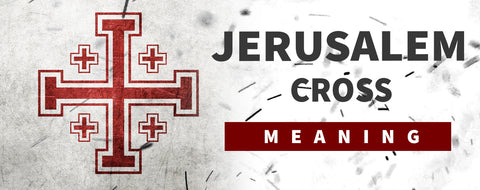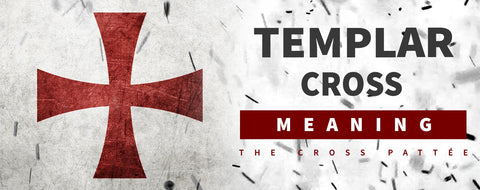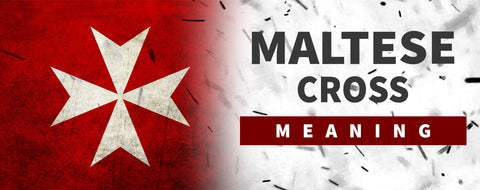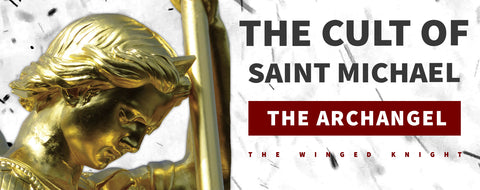
The Cult of Saint Michael the Archangel
of reading - words
Today, we will speak about Saint Michael ! After reading this blog article, you will know a lot more about this famous winged knight who defeats the Devil.
At the beginning of the 8th century AD, on an inhospitable and wild rock, the cult of the Archangel Michael gave birth to a great pilgrimage at the origin of the development of the abbey. The Saint Michael cult comes from the 5th century in the West. In Italy, Monte Gargano is a Michaelic site recognized since the end of antiquity, before the cult of the archangel then spread throughout the medieval West.
Michel is the leader of the Celestial Militia. In the Bible, he plays a major role in Revelation, the last book of the New Testament. This text relates the combat of Michael with the Devil, shown in the form of the dragon. With the help of his angels, Michael succeeds in bringing down the beast, which he throws into the abyss.
Who Is Saint Michael ?
Saint Michael the Archangel is one of the three archangels recognized by Christianity, and not only. His figure is in fact worshipped and venerated even by other professions of faith, such as Judaism and Islam. Indeed, it can be said that he is recognized by all as THE Archangel, before this term was used for Gabriel and Raphael. His name means "Who is like God", and his symbols have always been the sword, or spear and armor. Michael is a heavenly warrior, or rather, The Warrior, commander of the angelic armies, the one who led the armies of Paradise against Lucifer and his rebels, driving them back above the clouds and dropping them into Hell.

For Muslims, he is the angel who, together with Gabriel, instructed Muhammad in the Qur'an; an austere and shady angel who never laughed. Some traditions, especially oriental ones, depict him with a balance in his hand, with the intention of weighing and judging the souls of the deceased.
St. Michael the Archangel is an emblematic figure who travels through the history of Europe, and not only through religious history. He is venerated by the Byzantines and the Lombards, who compare him to the God Odin, whose virtues and warlike dimension he followed, while others compare him to Hercules, Mithra or Hermes. His cult spread both in the East and in the West, leading to the construction of places of worship placed along a straight line, the Holy Line, which connects Ireland to Israel, passing through England, France, Italy and Greece.
Patron saint of many cities and countries, protector of the Jewish people, guardian of the Catholic Church, protector of the sick and medical auxiliaries; of the armed forces, from the police to sailors, paratroopers, firemen, radiologists, grocers and all those who use scales, such as pharmacists, confectioners, mercymakers, fencers, masters of arms, gilders, cup makers.
It is really worth getting to know her better.
History of St. Michael the Archangel
Saint Michael the Archangel is mentioned five times in the Bible, always as the supreme leader of the heavenly host.
There was a time when he and Lucifer led the divine militia together, as the brightest of angels, the strongest, the bravest, the closest to God.
Apocalypse 12:7-8: 7 Then a war broke out in heaven: Michael and his angels were fighting the dragon. The dragon fought with his angels, but 8 did not prevail, and there was no room for them in heaven.
After Lucifer's betrayal, after his rebellion, the perfection represented by these two angels was broken, and they became tenacious enemies. Michael made war against his old brother the reason for his very existence, driving him out of heaven, chasing him through the millennia, defending mankind from its traps and temptations. Since then, the Archangel Michael has become the punisher of all those who revolt against God and the proud, the defender of Faith, Truth, and the Church itself.
His name comes from the Hebrew Mi-ka-El which means "who is like God?
"Archangel", which derives from the Greek, is a word composed of àrchein, "commander" and ànghelos, "messenger"). Therefore, the archangels, and Michael in particular, are those who command the other angels.
Often, the cult of St. Michael is intertwined with that of the Virgin Mary. Both fights against the devil, both are represented as they crush him under their feet, in the form of a snake or a dragon. Both, above all, are the protectors of humanity against its adulation, the guardians of God's flock against Evil. According to an ancient tradition, it is St. Michael the Archangel who will play the trumpet of the judgment announcing the end of the world.
St. Michael the Archangel is celebrated on September 29th with the other two Archangels, Gabriel and Raphael.

The cult of St. Michael the Archangel developed from East to West, and its spread in the West was due in large part to the Lombards, who since the sixth century, on the occasion of their passage through Italy, had reserved great devotion to him and erected many religious buildings in his name, including the Sanctuary of St. Michael the Archangel on Mount Gargano in Puglia. Where the commune of Monte Sant'Angelo is located today, with its splendid sanctuary dedicated to St. Michael, it is said that the Archangel appeared to the young archer Galgano, as he was chasing a magnificent white bull. Through the Archangel's intercession, the arrows thrown at the bull turned around and hit his hunter, who converted to Christianity.
It was Pope Gregory the Great who brought the Lombards to conversion, especially thanks to Queen Theodelinde. Saint Michael immediately pleased these fierce warriors of the North, because he embodied the qualities of Odin, and they chose him as their protector. Thanks to the Lombards, the cult of Saint Michael spread throughout northern Italy. Even today, there are testimonies of this spread in Pavia, the ancient capital of the Lombard kingdom, and in the Val di Susa, in Piedmont, where the Sacra di San Michele, a monastery perched on the top of Mount Pirchiriano, is still located. For centuries, it was a destination and a transit point for pilgrims between Italy and France. This superb architectural complex inspired Umberto Eco for his novel The Name of the Rose.
The sacred line of the Archangel
Here is the sacred line that connects all the most important places of worship dedicated to St. Michael the Archangel, also known as the Line of Ley - St. Michael Line :
- Skellig Michael in Ireland
- St Michael's Mount in Cornwall, England
- The Mont-Saint-Michel in Normandy, France,
- The Sacra di San Michele in Val di Susa,
- San Michele, Monte Sant'Angelo, Puglia
- Monastery of St. Michael on the island of Simi, Greece
- Monastery of Mount Carmel in Israel.

In addition to being along the same imaginary straight line, three of these important places are at equal distance from each other: Mont-Saint-Michel in France, the Sacra di San Michele in Val di Susa and the Sanctuary of Monte Sant'Angelo on Mount Gargano.
The Leys Lines are straight lines that unite places on Earth that have always been considered special, perhaps energy nodes of the planet, whose true meaning is impossible to trace. The Saint Michael Line, or Ley du Dragon Line, is, among others, perfectly aligned with the sunset on the day of the summer solstice. It is therefore no mystery that, since ancient times, the cult of St. Michael the Archangel has been studied from multiple points of view, following suggestions that often transcended religion and the spiritual value of the places of devotion.
Prayers to Saint Michael the Archangel
Sometimes the cult of St. Michael the Archangel was associated with that of the Virgin Mary. Both are emblems of the fight against evil, both are the guardians and protectors of humanity, both fight the Devil, crushing him under their feet, pushing him back to hell.
The prayers addressed to Saint Michael the Archangel are above all requests for help and protection.
The Prince of the Celestial Militia is invoked in the daily trials, but also in view of the Last Judgment. He is invoked as a guide, protector, shield against evil, and support. Never in the prayers addressed to other saints has it become clearer than in the invocations to St. Michael the Archangel that they were true weapons of faith, which must be challenged in daily battles. And how could it be otherwise, given the iconography that characterizes this beautiful and implacable Archangel? Since the origins of his cult, invocations, consecration and angelic crowns have been dedicated to Saint Michael the Archangel.

One prayer in particular deserves to be deepened. It is the one written in October 1884 by Pope Leo XIII, following a frightening vision in which the Devil threatened to destroy the Church and Saint Michael stood up for him. Leo XIII imposed that this prayer is recited at the end of every Mass, and inserted it among the most powerful exorcisms in the Exorcismus in Satanam and Angelos Apostaticos. This exorcism hides a prophecy that touches us closely, given that the exorcism dates back to the 1800s, and speaks of events that would occur in the immediate future. According to the prophecy, Lucifer and his allies will take control of the Papacy, but they will not succeed in destroying the Church. The exorcism may be recited only by an authorized priest, but the prayer written by Leo XIII may be recited by the faithful, and although it is not effective as an exorcism in the case of a proclaimed possession, it may prevent the possession, protecting those who have been targeted by the Evil One.
We report only the abbreviated version reported in the Roman ritual and published in 1902 :
Glorious Prince of the Celestial Militia, Saint Michael the Archangel,
Defend us in this fiery battle against all the powers of darkness and their spiritual malice.
Come to the aid of men created by God in His image and likeness and redeemed at great cost by the tyranny of the devil.
You are revered by the Holy Church as its guardian and protector, and the Lord has entrusted to you the souls who will one day occupy the heavenly seats. Pray, therefore, to the God of peace to keep Satan crushed under our feet, so that he may not continue to enslave men and damage the Church.
Present our prayers to the Most High, along with yours, that His Divine Mercy may soon descend upon us, and that you may chain the dragon, Satan's ancient serpent, and bind him in chains into the abyss. Only then will He no longer deceive souls.
Beyond the prophecy and exorcism of Leo XIII, it is clear that today more than ever, the gravity of what is happening around us, the succession of wars, sufferings and prevarications, so frequent and constant that they have become normal and obvious, requires the intervention of a benign force equipped with adequate weapons to fight evil. St. Michael the Archangel is a symbol of inexhaustible spiritual strength, courage, loyalty, purity, capable of guiding and saving souls who wish to follow the right path.
Another prayer dedicated to St. Michael the Archangel that deserves to be remembered is the angelic crown composed in 1751 by Antonia de Astonac, a Portuguese Carmelite nun. Recognized by Pope Pius IX, it is a kind of Rosary that is addressed above all to the Archangels and the angelic choirs. It is in fact composed of an invocation to God (Glory), an invocation (composed of the Our Father and three Hail Marys) for each of the nine angelic choirs and four priests, three for each of the Archangels and one for the Guardian Angel.
If you want to know more about prayers to Saint Michael the Archangel read our article "Who is the Archangel Michael?".
The presentations of St. Michael the Archangel in art and the collective imagination
In general, the main characteristics with which St. Michael the Archangel is represented are the armor, sword, or spear, the warlike attitude. As the cult of St. Michael the Archangel was born in the East, or at least in the Byzantine sphere, this means that he is very often represented with elegant clothes of Byzantine dignitaries, as you can see in many icons of St. Michael the Archangel, but also in the works by Simone Martini, for example. In this context, the Saint is usually dressed in the purple palmis or imperial lóros; he carries in his hand the labaro, a banner on which is written the trisághion, an ancient hymn that reads, "Holy God, Holy Fort, Holy Immortal, have mercy on us". As for the Byzantine devotion to St. Michael, it is worth remembering that Emperor Constantine I had a great sanctuary erected in his name in Constantinople, while in the West, the first basilica dedicated to the saint probably dates back to the fifth century.

Compared to the Byzantine iconography, the Western one prefers to present Saint Michael in the Apocalypse, as a celestial warrior, a prince in armor who with his wings spread guides the divine armies against the Evil One. The Archangel Michael is usually represented on foot, as a young man without a beard, hieratic, with wings spread, in his hand a spear or a sword, in the other a globe surmounted by a cross. He wears a flowing tunic, sometimes a coat, always armor.
On the other hand, we owe to Islamic tradition the use, in some of his representations, of the scales with which the Archangel weighs the souls, in view of the judgment. It is a tradition that has its origins in paganism, particularly in the Egyptian myth of Osiris and in Persian mythology, but which has been pictorially taken up by many artists. It spread mainly in the Gothic and Romanesque settings, both in the East and West. In this sense, Saint Michael the Archangel appears as the protector of the dead, a psychopomp, or rather their guide, as Hermes or Charon did in the Greek tradition, and a weigher of souls.

Moreover, the iconography of St. Michael, as it appears in the icons, paintings and statues representing him, owes much to that of the gods and heroes of pagan myths, in which the figure of the luminous hero who defeats Evil, often represented by a monster, has returned since the dawn of time. Let us think of the Babylonian god Marduk, Mithra, Hermes, all united by the characteristics of mediators between the celestial powers and man, bearers of light and salvation, and other qualities that we also find in Saint Michael.
As for the statues dedicated to the Archangel Michael, they are innumerable, and I take up the pictorial iconography of the warrior armed with the sword who defeats the Devil, or the Dragon, but also that, more oriental, of Saint Michael who judges souls.
In addition to the Byzantine and Romanesque bas-reliefs, of which there are many testimonies all over the world, we think in particular of the statue of the Archangel Michael in the Basilica of Monte Sant'Angelo, or the many statues of St. Michael that have succeeded to the top of the Castel Sant'Angelo in Rome, the first, in wood, since the 11th century, and gradually, up to the Saint Michael of Raphael de Montelupo, in marble and metal, with magnificent painted wings, unfortunately lost, and the bronze statue of Peter Anton van Verschaffelt, erected in 1752, which still watches over the Eternal City.








Paul Hellyer
Is there a St Michael association in England UK? If so please contact me.
Thank you.
Ian
What association does The Angel have with the Knights Templar